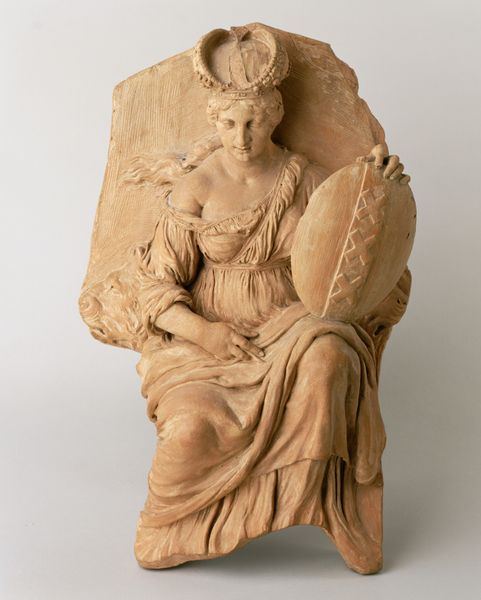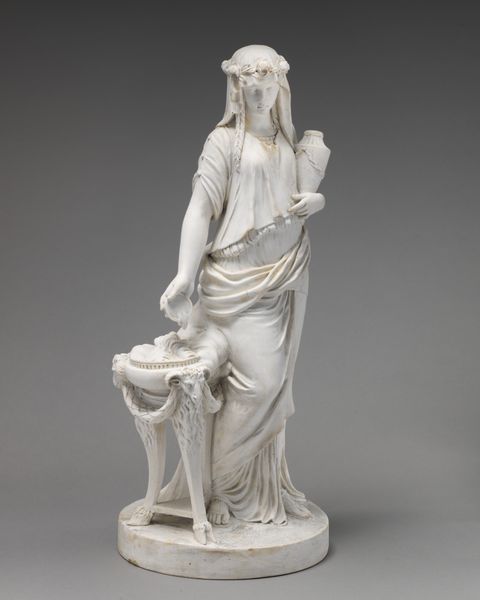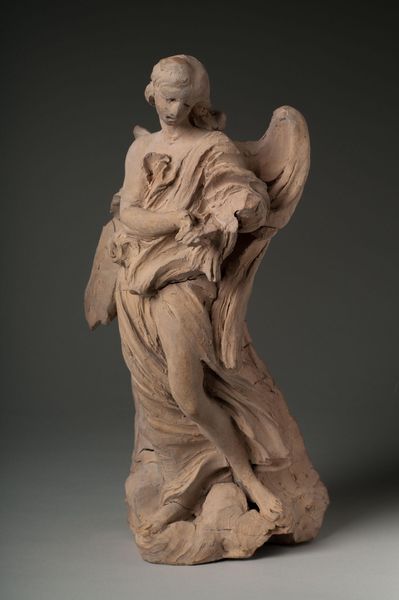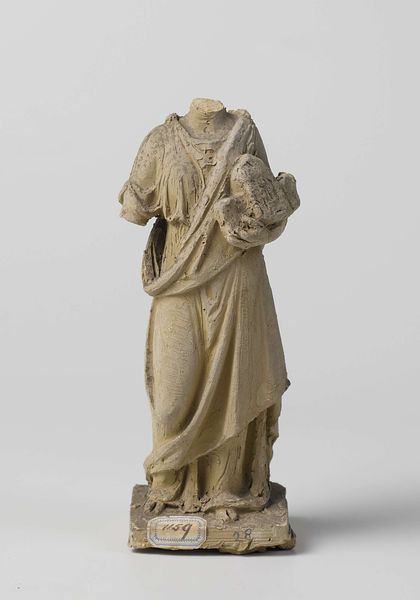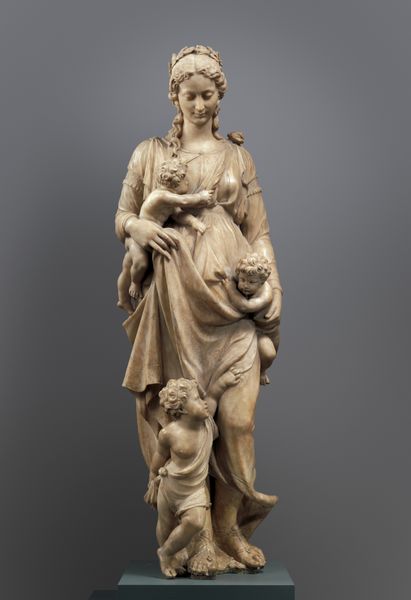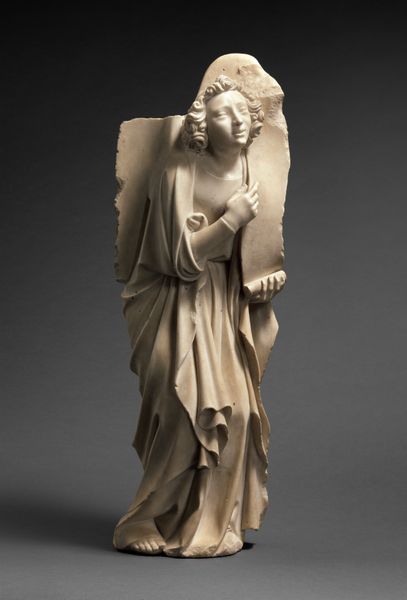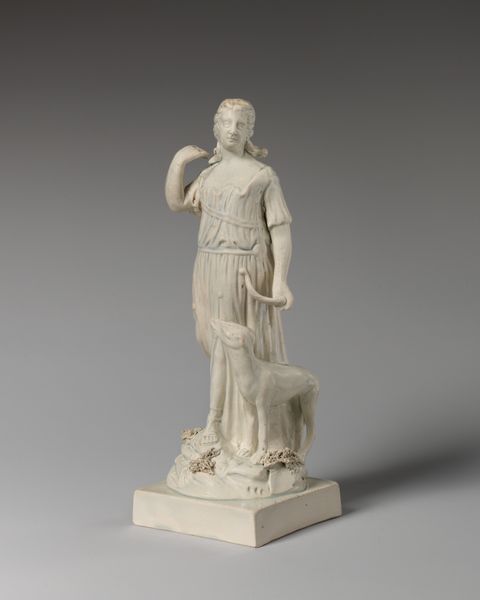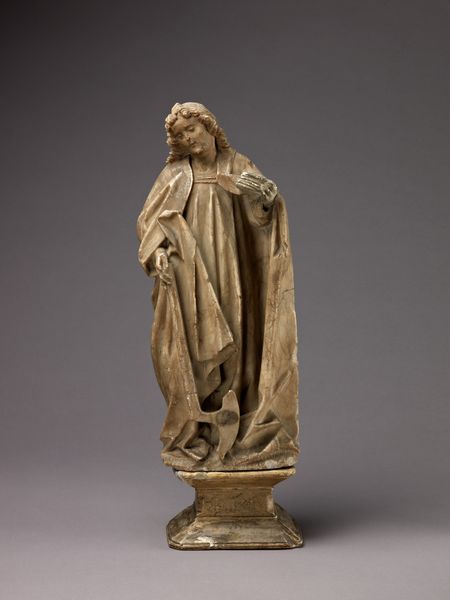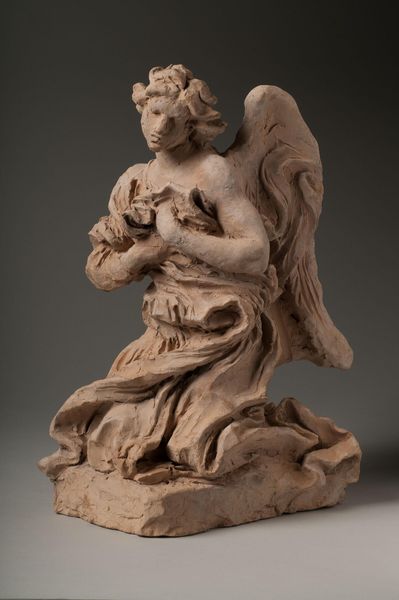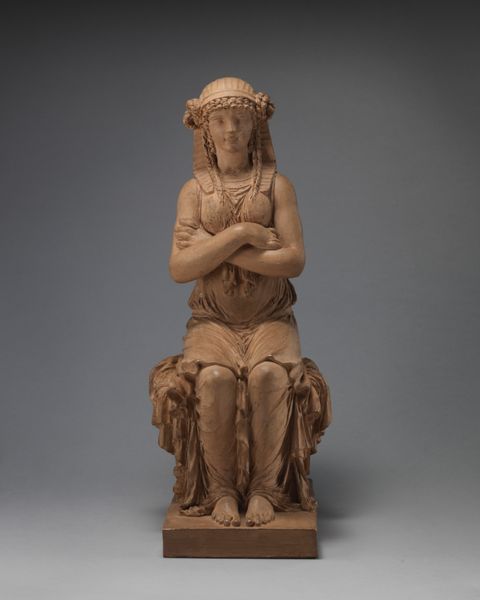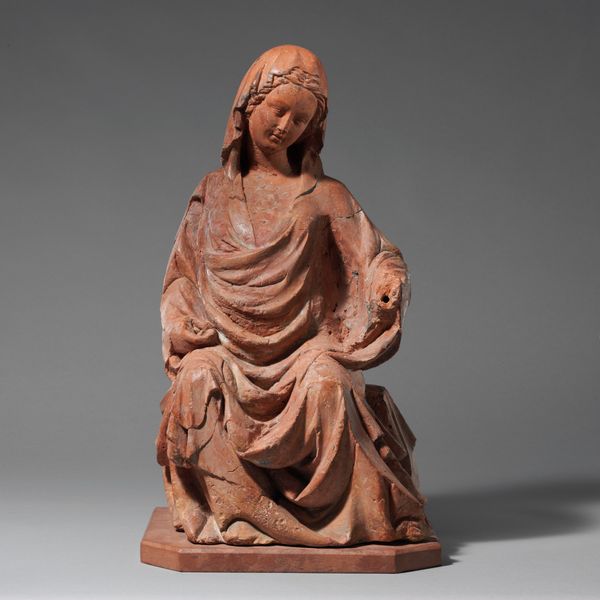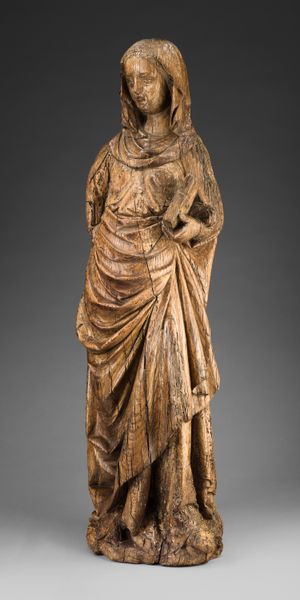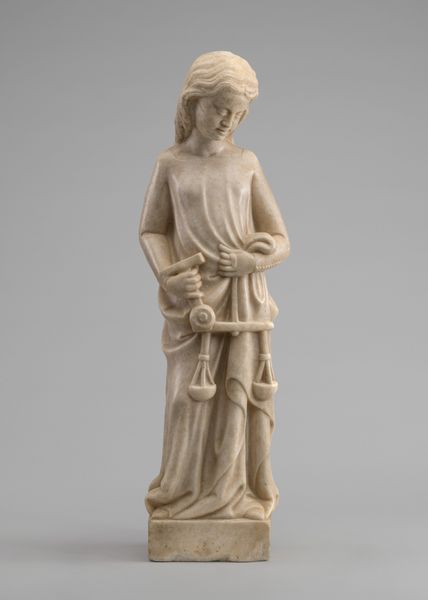
sculpture, terracotta
#
baroque
#
stone
#
sculpture
#
figuration
#
sculpture
#
history-painting
#
terracotta
Dimensions: 27 1/2 × 12 × 8 in. (69.85 × 30.48 × 20.32 cm)
Copyright: Public Domain
Curator: So, what strikes you first about Ignazio Collino's terracotta sculpture, "Judith with the Head of Holofernes," created around 1750? It currently resides here at the Minneapolis Institute of Art. Editor: Immediately, I’m pulled in by her gaze, it's averted, almost dreamlike, not triumphant as I'd expect. It feels…complicated, almost burdened. A little spooky, too. What about you? Curator: That sense of internal conflict is exactly what many scholars consider characteristic of the period’s engagement with gendered power. The piece embodies a larger discussion in how we interpret this narrative: it asks if Judith is a patriotic hero or a traumatized woman, maybe even a perpetrator herself? It complicates binary readings, don’t you think? Editor: Totally. It isn’t some macho superhero moment, more like a moment frozen in psychological ambiguity. You know, she could just as easily be sleepwalking after a really bad dream, but what a statement using terracotta—so grounded, literally! Curator: Collino worked primarily as a sculptor. He trained and spent much of his time in Turin. Considering Turin as an artistic center, particularly during the Baroque era, can add to our understanding. Artists grappled with depicting intense emotions during the Baroque, a response to the Reformation and part of the Counter-Reformation. Editor: Okay, history lesson aside, she's not just striking a pose, it looks exhausting. That head—she's definitely thinking, "Now what?” I mean, that makes her very real to me, oddly enough, since myths and historical paintings can be hard to relate to. Curator: Absolutely, and that brings us back to the core conflict. This moment, captured in terracotta, isn't just about victory. It presents the aftermath. We see the cost, the internal battle waged within Judith herself. And so many different Judiths appear in art history and our own minds; I appreciate Collino making it difficult. Editor: Yes, she doesn't offer answers; just hangs there as another gorgeous, unnerving question mark, in this museum. It makes you wonder what triumphs cost, on any battle field, or just…personally.
Comments
minneapolisinstituteofart almost 2 years ago
⋮
As told in the Bible, the Jewish heroine Judith slew the Assyrian general Holofernes, who had laid siege to her city. Pretending to desert her people, Judith attracted the attention of Holofernes, who invited her into his tent. When he passed out drunk, she beheaded him. Here, Judith is shown in a solemn and heroic pose, her upturned head a sign of the divine inspiration that enabled her to save her people. Ignazio Collino left his home in northern Italy for Rome, to study the art of classical antiquity, which he copied in drawings and small terra-cotta sculptures. This statue is Collino’s earliest known work of his own invention. It drew great admiration and praise and laid the foundation for his later fame.
Join the conversation
Join millions of artists and users on Artera today and experience the ultimate creative platform.
